Costumes, Wigs, and Props
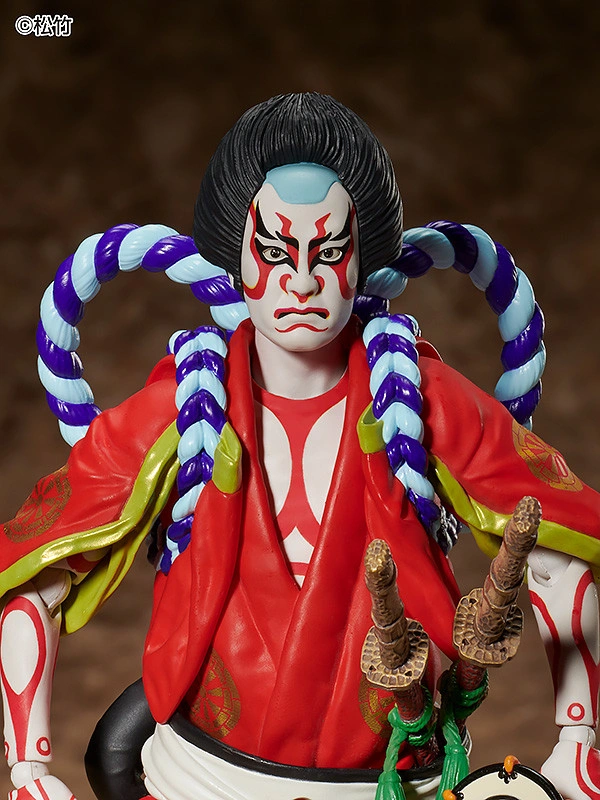
Kabuki costumes and makeup are so stylized and exaggerated that certain character types can be recognized from these aspects alone alone.
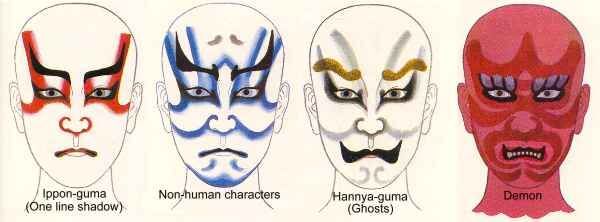
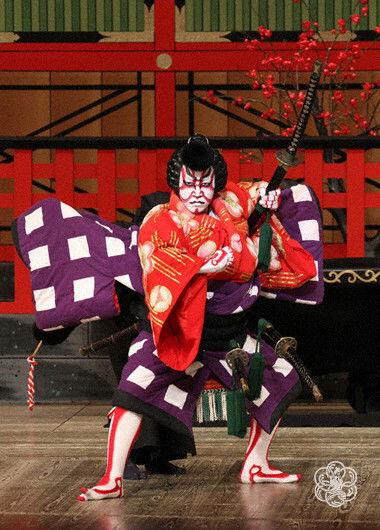
Jidai-mono (historical plays) may or may not have costumes accurate to the period the production takes place in. They may have costumes from the Edo Period or otherwise exaggerated garments. However, sewa-mono (contemporary plays depicting real life) have costumes that are more accurate to the time period of the story they are depicting. In sewa-mono productions, character type and personality are shown with colors, patterns, styling, etc.
Character is also expressed by wigs. There are 4 sections of each wig: bin (hair on sides of face), tabo (hair on top of head), mage (sections of hair in topknot or bun), and maegami (forelocks). Over 1400 wig styles created by changing and combining elements of the wigs. More wigs are made for male roles than female roles due complexity of setting and character.
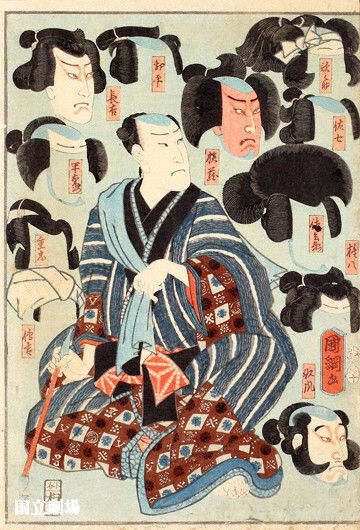
Pictured above: several wig styles for tachiyaku
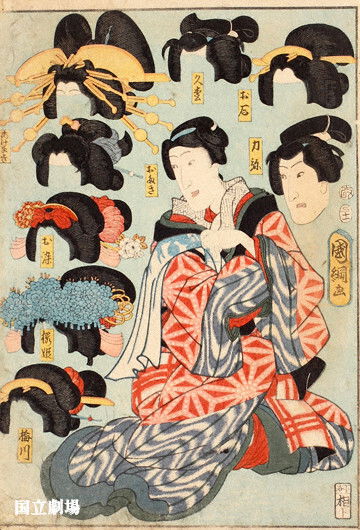
Pictured above: several wig styles for onnagata
Kabuki props fit mainly into two categories: honomono, which are everyday items, and koshireamono, which are items specifically crafted for stage or story. Koshireamnono props are the more popular of the two since they help show character type and personality.
There are also onstage assistants dressed in black to hand actors props and aid with scene changes. They are called kurogo and should be ignored by the audience.
